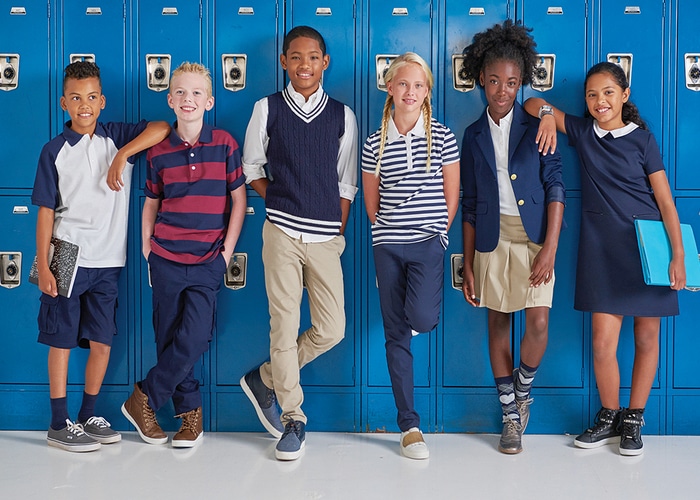With public schools, charters and child-care centers across the country being required to wear uniforms, the traditional back-to-school shopping is being remade.
More than 40 percent of public schools and preschools in the country are using uniforms, which is causing mainstream retailers to rethink how they stock and market school gear.
Amazon, Target and Walmart are all selling their own brands of polo shirts, pleated skirts and khakis for children as young as two years old, while long standing companies like Old Navy have created “uniform hubs” in all 1,100 stores in the U.S. Carter’s, Kohl’s and H&M are also trying to break into a $1 billion-a-year- market long that is now being dominated by a handful of specialty brands.
“Every retailer is adapting to the growth of uniforms,” said Matthew Buesing, vice president of customer and digital marketing at French Toast, which sells directly to thousands of schools, as well as to stores such as Target, Costco and Macy’s. “We’ve reached a middle ground where all types of schools — private, public, preschools — are using uniforms.”
According to school administrators, uniforms are as much about safety and convenience as they are about conclusion. Uniforms make students feel like they’re part of a team, teachers know exactly what they’re wearing so they don’t have to worry about them getting lost on a field trip or playground, and parents save money by not having to purchase a bunch of different clothes.
“It helps them learn because they just don’t care about what anybody is wearing — they’re all in red and blue,” said Renatta Thomas, a teacher at Open Minds Open Hearts Daycare in New Orleans, where students ages 2 months to 5 years wear uniforms. The outfits also come in handy, she said, when it’s time to teach children about primary colors.
But for retailers, uniforms continue to be a growing source of revenue. The upcoming school year is a crucial time for some of the country’s largest chains: Behind the holiday season, it is the second-largest shopping event of the year and has a great impact on the all-important fourth quarter when companies make the bulk of their yearly sales.
In all, Americans are projected to spend $26.2 billion this back-to-school season, down about 5 percent from last year’s $27.5 billion, according to the National Retail Federation. Families with school-age children are expected to spend $697, with the largest chunk — $240 — going toward clothing and accessories.
According to the National Retail Federation, Americans are projected to spend $26.2 billion this back-to-school season, which is down 5 percent from last year’s $27.5 billion. Families are expected to spend around $697, with $240 of it going toward clothing and accessories.
Due to the increase of uniform requirements, parents are changing how they shop for the school year by making fewer late-summer shopping sprees for everyday clothes and purchasing school uniforms in bulk and sneakers and backpacks.













